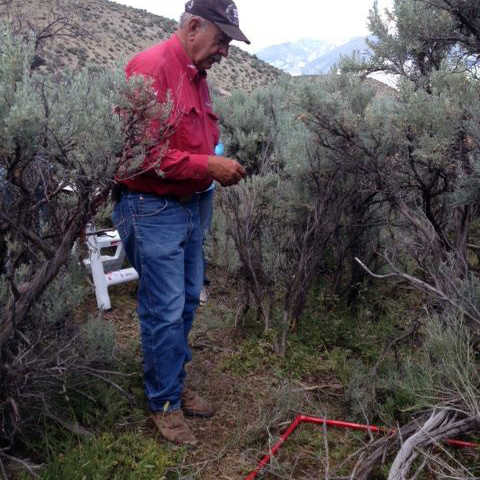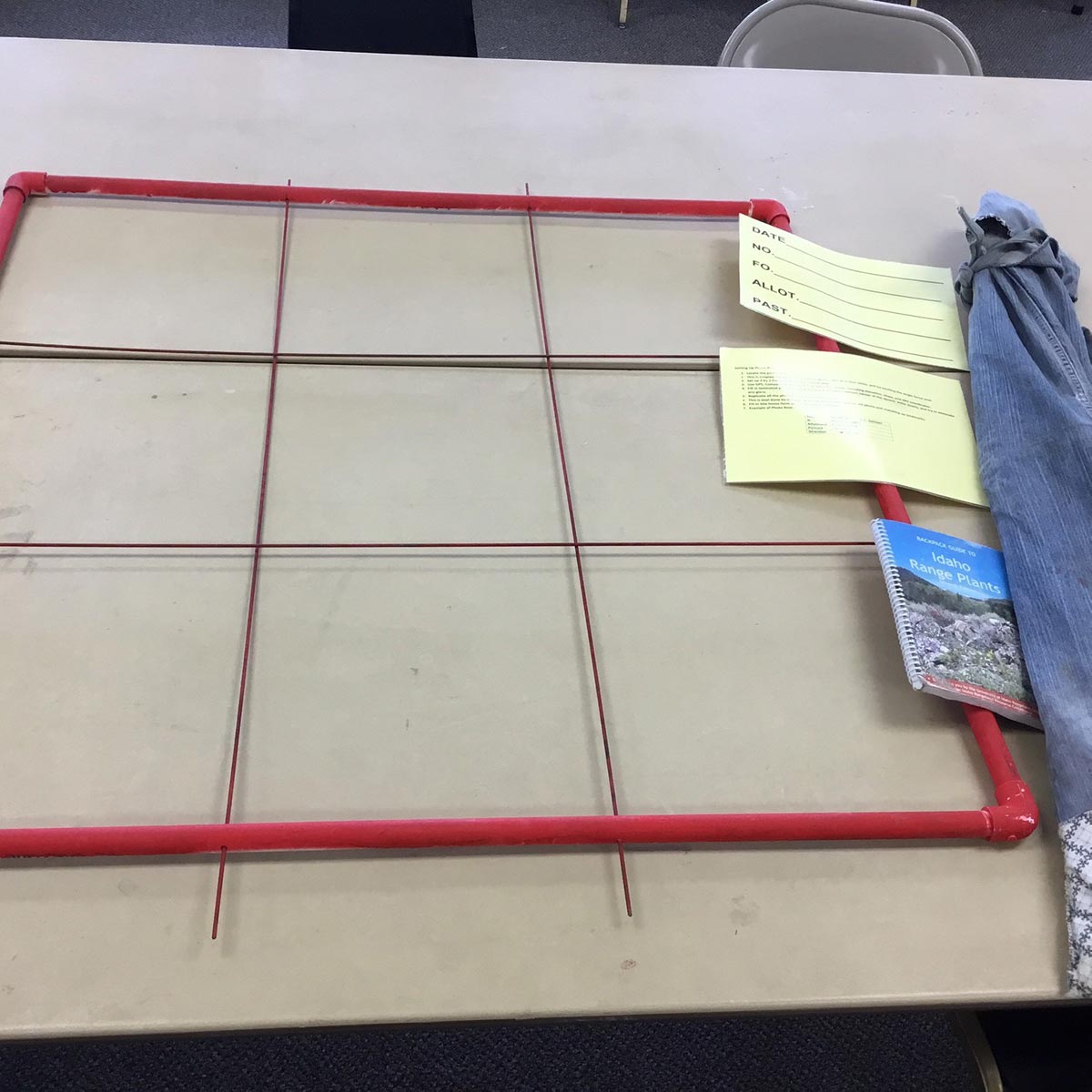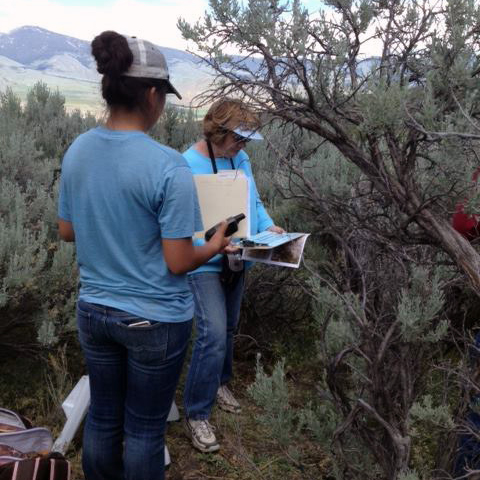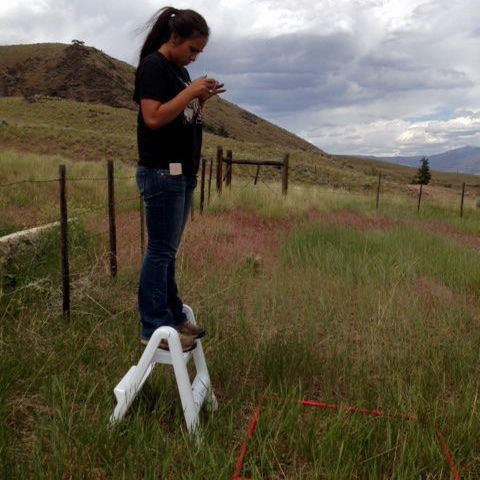Monitoring the Range
Idaho ranchers monitor their rangeland with assistance of University of Idaho Extension tutors
Cattle is big business in Lemhi County.
Cows serve as the leading source of income in the county. And with 93 percent of the county classified as public land, it is imperative that the land be properly managed to maintain healthy rangelands and sustainable livestock grazing practices.
Protecting the Land
Federal land managers meet with ranchers each year to discuss their grazing allotments and set standards about what the rangeland should look like after cattle have grazed. Standing forage height is determined to help with erosion and plant growth, and land managers decide how long and how many cattle can be turned out on each pasture based on monitoring data they have collected.
Limiting the duration and number of cattle on pastures helps grasses replenish. If ranchers fail to meet the standards set by land managers, they can see a reduction in their grazing season or number of cattle they can graze on their allotment, resulting in a need for alternative — and often costly — feed.
Monitoring Tutor Program
Shannon Williams, University of Idaho Extension educator in Lemhi County, has offered rangeland monitoring workshops over the years, but found the adoption rate of practices taught at the workshops was low. The workshops were held during the growing season — the ideal time to monitor rangeland — and ranchers were attending. But many were not taking the next steps because of a lack of time or comfort level in how to properly monitor their land.
“For the majority of ranchers, a few have a plant background but where they are really comfortable is the animal side of everything,” Williams said. “We train them and expect them to go out and do it. But they need a little bit of help and encouragement.”
In 2016, Williams met with federal land managers from the Salmon-Challis National Forest and Salmon Bureau of Land Management to discuss how to better help ranchers monitor their grazing allotments. The group decided that photo monitoring would be the ideal method because photos work well for establishing long-term trends, are easy to take and are already being shot on allotments by federal land managers.
But, instead of just telling ranchers how to photo monitor, Williams decided to show them, with the implementation of a photo monitoring tutor program. Williams received funding for a summer intern in 2016 and hired Tessa Shepard, a U of I student studying rangeland ecology and management. Shepard received training on photo monitoring from the Idaho Department of Agriculture and the Lemhi Soil and Water Conservation District provided funding for monitoring kits.
“I didn’t want one of the excuses for the ranchers to not monitor to be that they didn’t have the equipment,” Williams said. “They needed a fence post, a photo frame and a book with some common plant pictures in it. We built a photo frame with a bag to put the hardware in so they each had their own kit. So, when they got comfortable enough they could go out and do the monitoring themselves.”
Participants gave UI Extension permission to access the photo monitoring data for their grazing allotments that had been collected by federal land managers. Shepard scheduled time to visit the monitoring sites with the ranchers and assisted those unfamiliar with GPS on how to find the correct sites. She taught them how to take the photos with all of the required elements present, how to complete a photo board, fill out a data sheet and build notebooks for housing the data.
“Land managers try and coordinate with the ranchers when they are doing monitoring, but the schedules don’t always work,” Williams said. “There is no way you’re going to get a rancher to go out during haying season when they are trying to get all their winter feed up to monitor their range. We had the flexibility of a person dedicated to working with the rancher on their schedule to go monitor and coach them.”
The project continued in 2017 when Sandra Goddard, a U of I student studying wildlife resources, served as the intern and completed the same steps while also teaching the ranchers what to look for when comparing photos from the previous year.
“The interns were the nudge they needed to go out and do it,” Williams said. “It was one-on-one, it was their range, so it was important to them.”
In 2016, six ranchers with 23 monitoring sites participated in the program. In 2017, the number grew to nine ranchers and 30 monitoring sites. The program was held again in 2018, but summer storms resulted in delayed hay harvest and deteriorated road conditions for monitoring. Seven ranchers with 23 monitoring sites participated in 2018.
Expanding for the Future
After surveying participants, Williams has decided to add forage measurements to the monitoring plans. She will work with Melinda Ellison, an assistant professor at the U of I Nancy M. Cummings Research, Extension and Education Center near Salmon, to determine what information needs to be included and the best way to measure.
“Dr. Ellison and I have already met with some of the ranchers to find out what they want to know from the data,” Williams said. “So, when we go to their sites, we’ll know what equipment we need to have and what we are measuring to get them the information they need.”
Williams is happy with the progress the program has made the past three years. With over 200 ranchers receiving grazing permits, the demand for education continues.
“Getting these ranchers to the point that they will go do monitoring on their own is success,” Williams said. “It’s slower going, but the fact that we have as many ranchers as we do and they are needing less and less help each year and are continuing to participate and do monitoring, I think that’s success.”
Article by Amy Calabretta, College of Agricultural and Life Sciences.
Published in March 2019.










